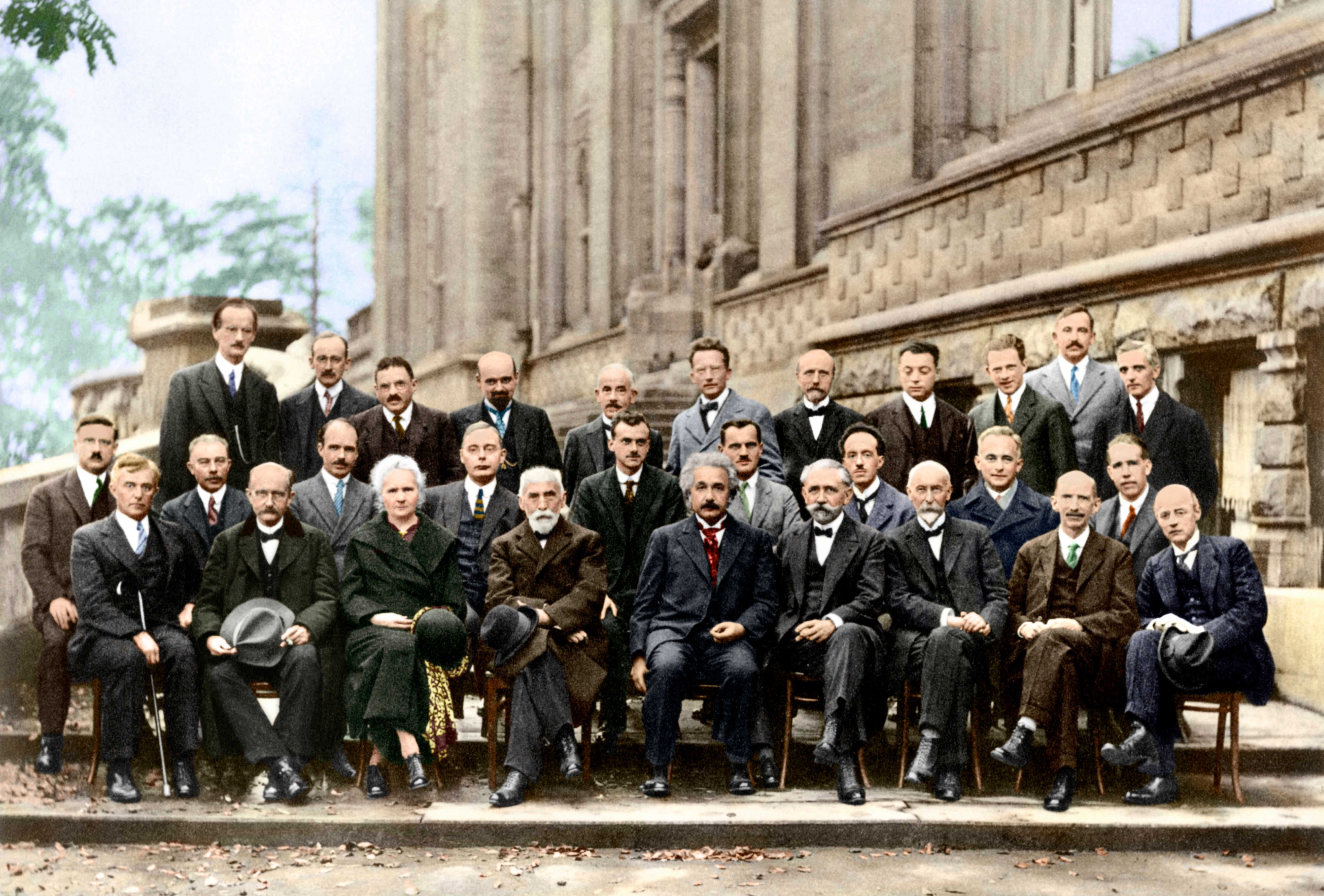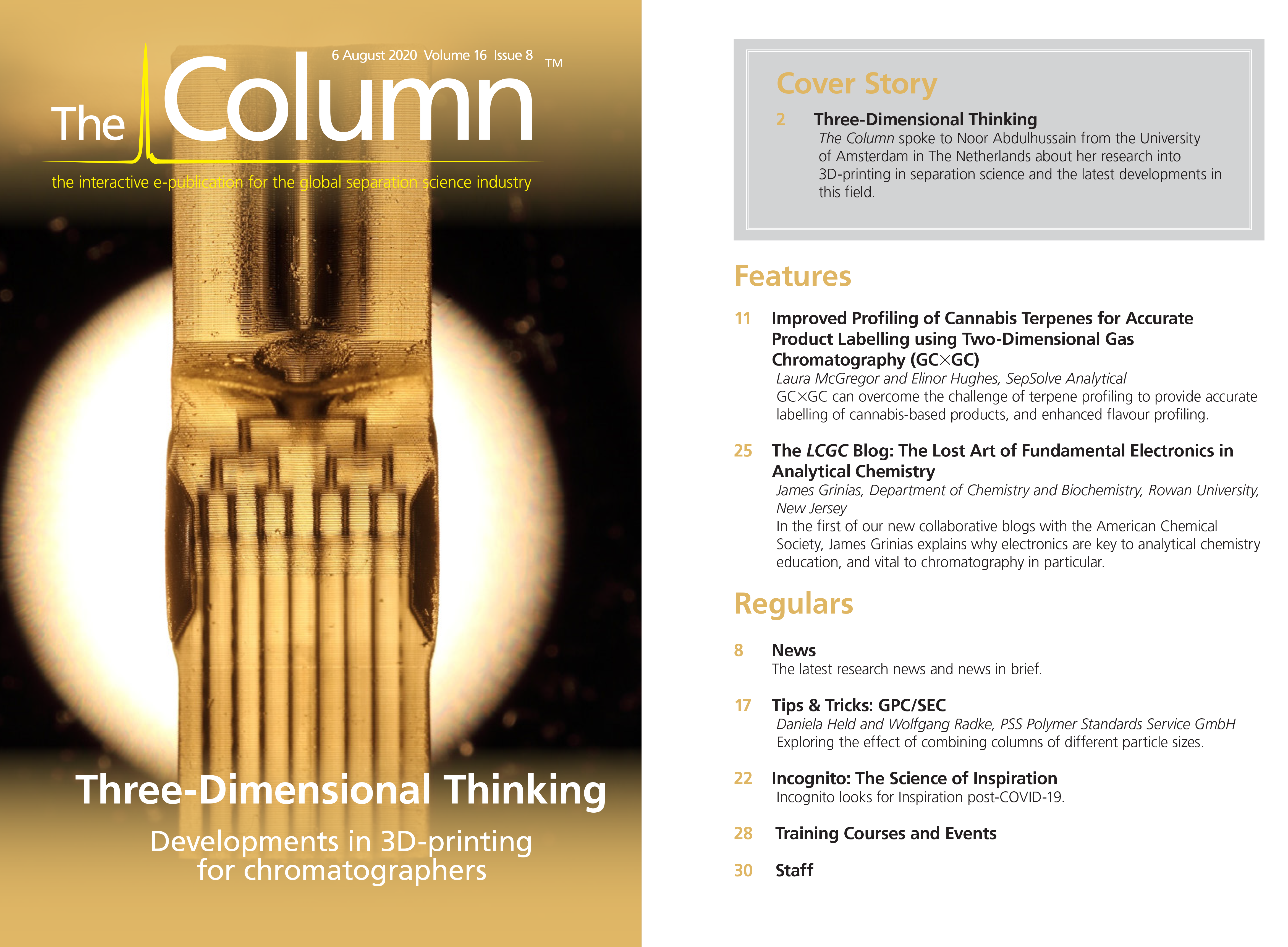The Science of Inspiration: Post‑COVID-19
Incognito looks to a stellar gathering of scientists from the 5th Solvay Conference in 1927 for inspiration to rejuvinate his mojo in these uncertain times.
Back row (left to right): Auguste Piccard, Émile Henriot, Paul Ehrenfest, Édouard Herzen, Édouard Herzen, Théophile de Donder, Erwin Schrödinger, Jules-Émile Verschaffelt, Wolfgang Pauli, Werner Heisenberg, Werner Heisenberg, Ralph Howard Fowler, Léon Brillouin. Middle row ( left to right): Peter Debye, Martin Knudsen, William Lawrence Bragg, Niels Bohr Front row (left to right): Irving Langmeir, Max Planck, Marie Curie, Hendrik Lorentz, Hendrik Lorentz, Charles Thomas Rees Wilson, Owen Willans Richards

In times like these, when we are all feeling a little battered and bruised from the pandemic, I like to turn to various sources of inspiration from the scientific world.
As I pondered where to go looking to pick up my spirits and rejuvenate my scientific mojo, I realised that the inspiration I was looking for was staring me in the face. My computer welcome screen shows me the picture to the left, every morning as I start work: This is a colourized photograph of the Fifth International Solvay Institute’s Conference for Physics and Chemistry, which took place in Brussels from 24 to 29 October 1927. The special subject title for the conference was “Electrons and Photons” and focussed on the newly formed theorems of quantum physics.
As we labour to return to the laboratory and begin experimentation under the “new normal” ways of working, we might perhaps feel that adaptation puts us at a disadvantage, the requirements for social distancing limiting our presence in the laboratory or the ease with which we can undertake our much loved science.
Well, just put that into perspective by thinking a little about the participants of the Solvay conference in 1927. Let’s take a look at some of the folks within the picture. Of the 29 people featured, 17 of them were either at that time, or would go on to become, Nobel Prize Laureates, which is why the image is often called the “Most Intelligent Picture in History”. Whilst I’m sure that you will be familiar with the most scientifically notable figures, let’s just draw upon history to highlight some of the notable achievements of this cohort:
Émile Henriot was the father of the ultracentrifuge and electron microscopy, and the first to demonstrate that potassium and rubidium were naturally radioactive.
Wolfgang Pauli was responsible for the exclusion principle which helped to explain the entire table of elements. He was famous for his critical style and once said of a particularly bad paper he was reviewing, “This isn’t right, in fact it isn’t even wrong!”
Werner Heisenberg was the founder of quantum mechanics, developing the matrix theory of quantum mechanics (quantum principles applied to Bohrs semi-classical orbits model) and his famous uncertainty principle. He was also responsible for the proton / neutron model of the atomic nucleus.
Léon Brillouin was the father of modern solid state physics, applying information theory to physics and the design of computers (latterly as a faculty member of the IBM Watson laboratory), and coined the concept of “negentropy”, bringing together the concepts of entropy and information.
Irving Langmuir was a surface chemist who invented, amongst other things, gas filled incandescent lamps and hydrogen welding. The Langmuir-Blodgett film balance has been used for decades to study the physical and chemical properties of monolayers, and his 1919 publication, “The Arrangement of Electrons in Atoms and Molecules”, outlined the concentric theory of atomic structure.
Peter Debye pioneered the use of dipole moments for asymmetrical molecules and extended Einstein’s theory of specific heat to low temperatures by including low-energy phonons. In 1923, together with his assistant Erich Hückel, he developed an improvement to the Arrhenius’ theory of electrical conductivity in electrolyte solutions and derived the Debye–Hückel theory.
Sir William Lawrence Bragg was awarded the Nobel prize for physics jointly with his father Sir William Henry Bragg for their work on the analysis of the structure of crystals using X-ray diffraction. Bragg was the director of the Cavendish Laboratory, Cambridge, UK, when the discovery of the structure of DNA was reported by James Watson and Francis Crick in 1953.
Paul Dirac formulated the Dirac equation which describes the behaviour of fermions, and predicted the existence of antimatter prior to it being observed. Dirac shared the 1933 Nobel Prize in Physics with Erwin Schrödinger “for the discovery of new productive forms of atomic theory”.
Arthur Compton described Compton scattering, the behaviour of X-rays colliding with electrons as if they were relativistic particles, their frequency shifting in proportion to the angle of scatter.
Louis de Broglie discovered that any particle has wavelike properties, with a wavelength inversely proportional to its momentum, helping to justify the Schrödinger equation. Anyone who has studied physical chemistry or mass spectrometry will be familiar with the “de Broglie wavelength”.
Sir Owen Richardson won the Nobel Prize in Physics in 1928 for his work on thermionic emission, a principle which should be familiar to those using gas chromatography (GC) with mass spectrometric (MS) detection.
This is just a smattering of the brilliance on show in this picture and I hope that many of those not specifically mentioned above—Curie, Planck, Einstein, Bohr, and Schrödinger especially—will be familiar to the reader.
The Solvay Conference of 1927 was famous for the constant mental jousting between Einstein and his supporters known as the “Scientific Realists”, and Niels Bohr and the “Instrumentalists”. Einstein led a series of thought experiments designed to disprove the Heisenberg uncertainty principle and at the end of each day Bohr would ruminate over Einstein’s attacks, responding the next day with a rebuttal, citing Einstein’s omissions or errors. Bohr even used Einstein’s own theory of relativity against him, reportedly winning the argument and laying the foundation for evidence-based physics derived using scientific methods. A not-so-happy Einstein is said to have commented that, “God does not play dice.” But Bohr would not be belittled, replying, “Einstein, stop telling God what to do.” A lively conference indeed – I remember seeing a few “mental and conceptual” tussles at conferences, but nothing on this scale and not for many years now.
However, what I really marvel at as I return to the laboratory, are the achievements of this group of almost a century ago, given the resources available to them. There was no internet, scientific journals were the main form of communication, the telephone had existed for almost 50 years but usage was still sparse (Einstein famously shunned the use of telephones, preferring to spend his time in quiet reflection), equipment manufacturers existed but their instruments were very expensive and so most had to be hand-made. To share ideas and collaborate, letters needed to be hand-written or time‑consuming journeys undertaken. There were no computers; all computations were done manually and written longhand. What these people achieved beggared belief. There were no Teams video meetings, no ordering of equipment or consumables and reagents online for next day delivery, no next day call outs of service engineers, no online journals with advanced search engines, no internet, for goodness sake; yet they managed to change the world in just a few short years. Yes, this was a time of great challenge in a nascent area of science which presented great opportunities, but compared to the ease and speed of communication, the availability of resources, and the wealth of knowledge at our fingertips, we should be taking on our current challenges with a vigour that surpasses even the great minds which gathered at the Solvay conference of 1927. Who in this picture could have envisaged that less than a century later, as we also face issues with travelling to conferences, that we would have the facility to switch to the “virtual” mode, meeting over the internet to share our ideas and aspirations?
So, let’s re-enter laboratory life with renewed vigour and push our science as we never have before. Let us break the barriers that face chromatography, mature though the technique is, and work tirelessly to make the seemingly impossible a reality. We need to have integrated chromatographic systems with dead volumes approaching zero in order to reduce the size of chromatographic columns and packings, which will ultimately lead to very fast separations. We need to improve the specificity and speed of our detectors. Heck, we still need a universal detector with a relative response factor of one for all analytes. Post-COVID, I feel that increased automation will also receive renewed attention given the immediate need for social distancing, so let us strive for fully autonomous systems, with sample preparation and analysis combined into single systems. There is so much for us to strive for. On a local level, we need to face our own personal and organisational challenges knowing that, no matter how difficult things have been in recent months and the tragedy of the COVID-19 pandemic, we really are blessed with the technologies and abilities at our disposal.
I wanted to conclude with a further comment, given the recent death of George Floyd and the emergence of the Black Lives Matter campaign. I would like to celebrate the fact that if I were to take a similar photograph at a conference in 2021, I know that it would contain a much broader representation of gender and racial diversity than that of the Solvay Conference above. Whilst this is encouraging, we should never cease to battle against inequality in science and continue to strive to ensure our wonderful scientific family fully reflects the communities from which we draw our talents.
I’ll end with one of my favourite quotes from a physicist who would also have featured in the Solvay picture had he been of that time. This quotation, given as a piece of advice to his children during a June 2010 television interview, never fails to get me going again after any lull in my scientific joie de vivre:
“One, remember to look up at the stars and not down at your feet. Two, never give up work. Work gives you meaning and purpose and life is empty without it. Three, if you are lucky enough to find love, remember it is there and don’t throw it away.”
—Stephen Hawking, 1942–2018.

Characterizing Plant Polysaccharides Using Size-Exclusion Chromatography
April 4th 2025With green chemistry becoming more standardized, Leena Pitkänen of Aalto University analyzed how useful size-exclusion chromatography (SEC) and asymmetric flow field-flow fractionation (AF4) could be in characterizing plant polysaccharides.
Investigating the Protective Effects of Frankincense Oil on Wound Healing with GC–MS
April 2nd 2025Frankincense essential oil is known for its anti-inflammatory, antioxidant, and therapeutic properties. A recent study investigated the protective effects of the oil in an excision wound model in rats, focusing on oxidative stress reduction, inflammatory cytokine modulation, and caspase-3 regulation; chemical composition of the oil was analyzed using gas chromatography–mass spectrometry (GC–MS).












